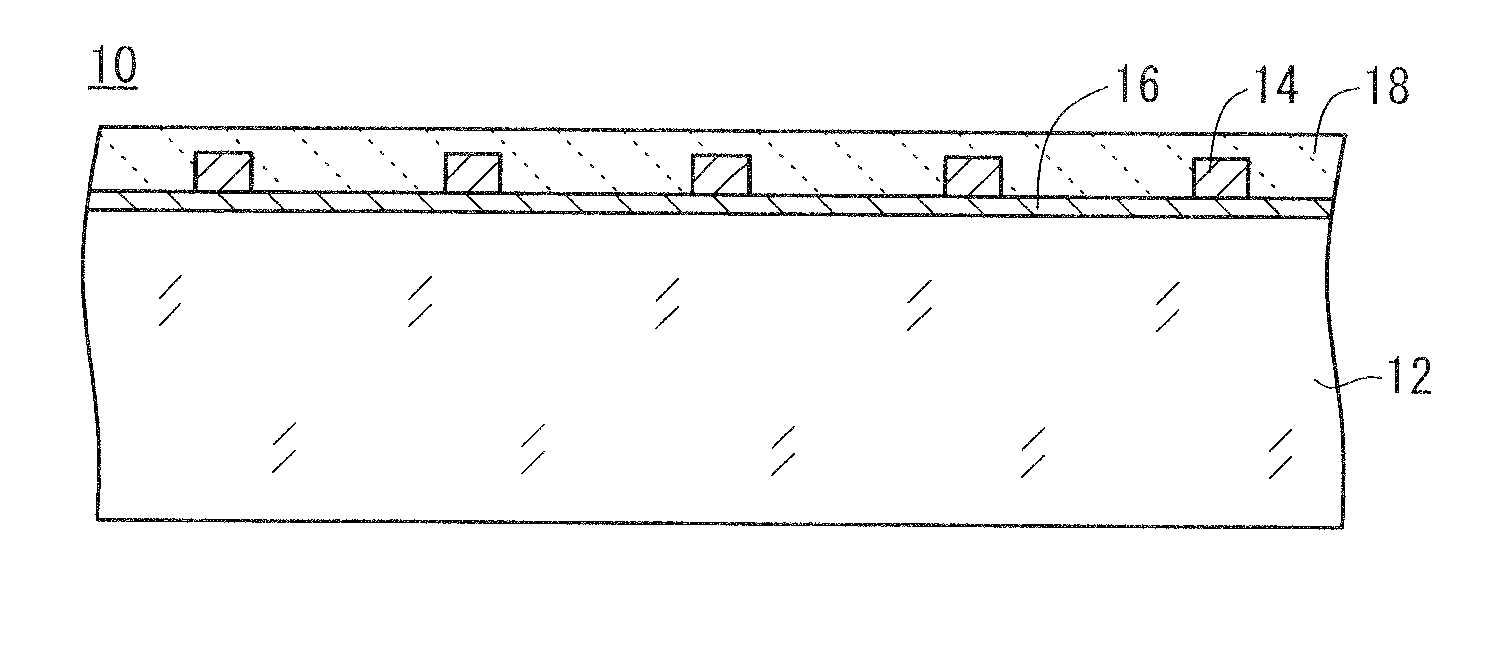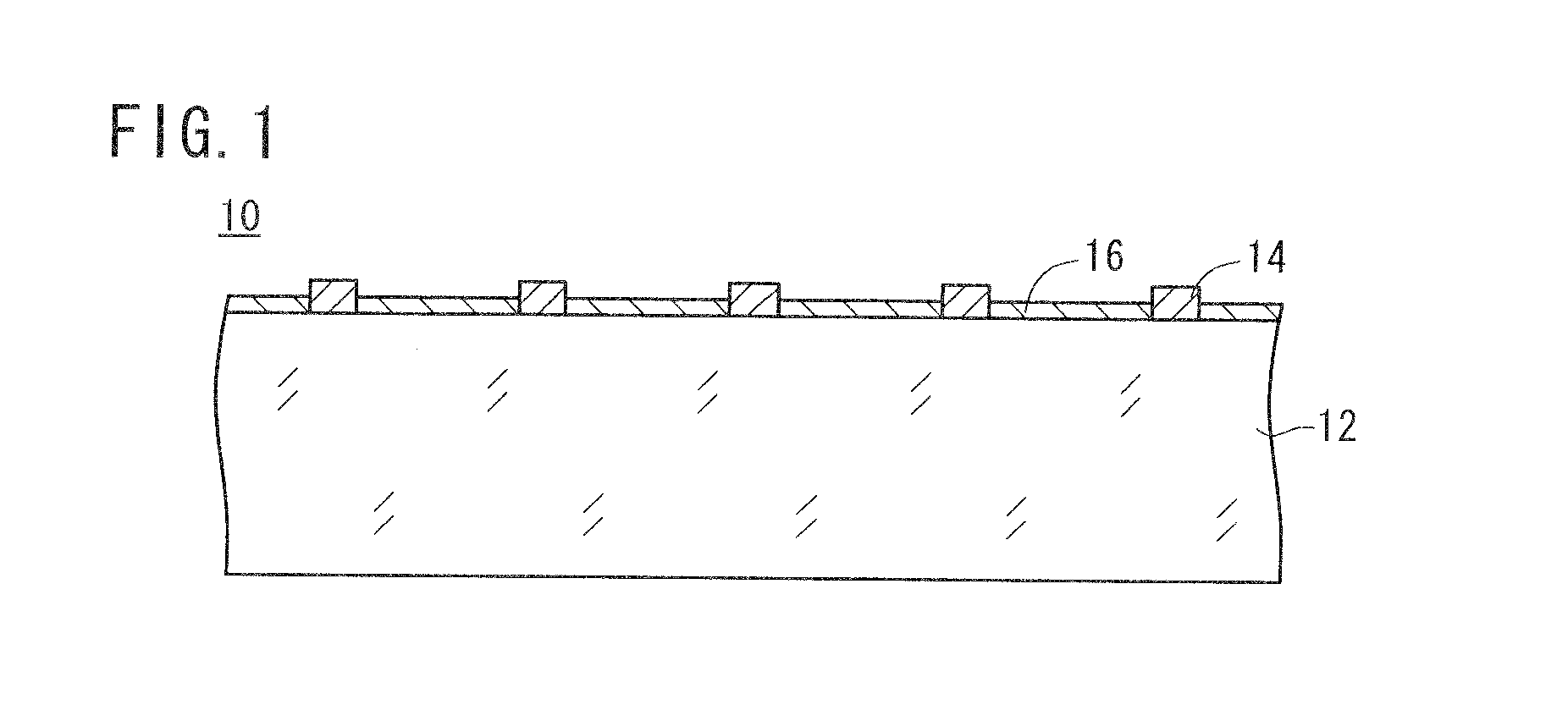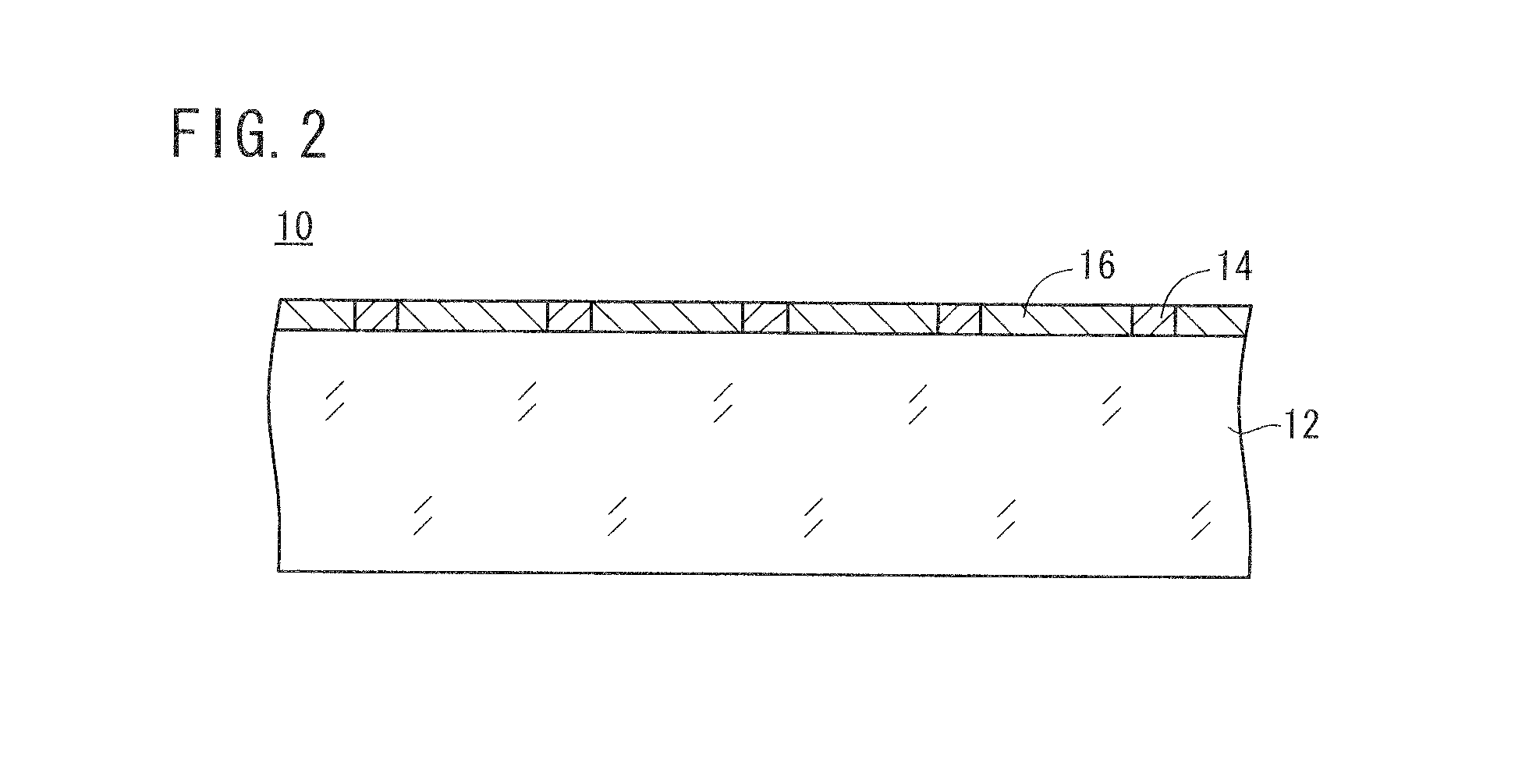Spontaneous emission display, spontaneous emission display manufacturing method, transparent conductive film, electroluminescence device, solar cell transparent electrode, and electronic paper transparent electrode
a technology of spontaneous emission and manufacturing method, which is applied in the direction of sustainable manufacturing/processing, identification means, instruments, etc., can solve the problems of high cost, high temperature treatment, and disadvantages of transparent conductive layers in low light transmittance, and achieve low cost, low surface resistance, and low cost
- Summary
- Abstract
- Description
- Claims
- Application Information
AI Technical Summary
Benefits of technology
Problems solved by technology
Method used
Image
Examples
first example
[0316]First Example is described below. The properties (surface resistance, film strength, etc.) of the thin-wire structure portion 14 formed on the support 12 were evaluated in First Example.
Examples 1 to 14 and Comparative Examples 1 to 7
[0317]
(Preparation of Emulsion A)Liquid 1Water750mlGelatin (phthalated gelatin)20gSodium chloride3g1,3-Dimethylimidazolidine-2-thione20mgSodium benzenethiosulfonate10mgCitric acid0.7gLiquid 2Water300mlSilver nitrate150gLiquid 3Water300mlSodium chloride38gPotassium bromide32gPotassium hexachloroiridate (III)5ml(0.005% KCl, 20% aqueous solution)Ammonium hexachlororhodate7ml(0.001% NaCl, 20% aqueous solution)
[0318]The potassium hexachloroiridate (III) (0.005% KCl, 20% aqueous solution) and the ammonium hexachlororhodate (0.001% NaCl, 20% aqueous solution) in Liquid 3 were prepared by dissolving a complex powder in a 20% aqueous solution of KCl and a 20% aqueous solution of NaCl, respectively, and by heating the resultant solutions at 40° C. for 120 m...
second example
[0366]Among the samples of Examples 1 to 14 shown in Table 1, the sample of Example 14, which was produced by carrying out the calender treatment after the development and also after the fixation, had the lowest surface resistivity of 0.08 (Ω / sq).
[0367]Thus, the relation between line pressure and surface resistivity in the calender treatment after development and the calender treatment after fixation was examined. The results are shown in FIG. 10.
[0368]Sample B-a-2 (see Example 3) was used in this example. The sample was exposed and developed in the same manner as above, and then washed with pure water for 1 minute, and dried at 40° C. The dried sample was subjected to a calender treatment after development, and subjected to a fixation treatment using a fixer N3X-R for CN16X (trade name, available from FUJIFILM Corporation). Then, the sample was washed with pure water for 2 minutes, dried, and subjected to a calender treatment after fixation.
[0369]Two calender roll units were used i...
third example
[0372]Third Example is described below. The properties (transmittance, volume resistance, surface resistance, flexibility, etc.) of the transparent conductive film 10 were evaluated in Third Example.
1. Production of Support 12 Having Thin-Wire Structure Portion 14
(Preparation of Emulsion)
[0373]An emulsion used in Third Example is the same as Emulsion A of First Example, and duplicate explanations therefor are omitted.
(Production of Coating Sample)
[0374]A coating sample used in Third Example is the same as Coating sample A using Emulsion A described in First Example, and duplicate explanations therefor are omitted.
[0375]In the obtained coating sample, the emulsion layer had an Ag / binder volume ratio of 1 / 0.7. Thus, the emulsion layer satisfies the Ag / binder ratio condition of 1 / 4 or more, which is preferably used in the present invention.
(Exposure and Development Treatments)
[0376]Then, the dried coating layer was exposed to a parallel light from a light source of a high-pressure merc...
PUM
 Login to View More
Login to View More Abstract
Description
Claims
Application Information
 Login to View More
Login to View More - R&D
- Intellectual Property
- Life Sciences
- Materials
- Tech Scout
- Unparalleled Data Quality
- Higher Quality Content
- 60% Fewer Hallucinations
Browse by: Latest US Patents, China's latest patents, Technical Efficacy Thesaurus, Application Domain, Technology Topic, Popular Technical Reports.
© 2025 PatSnap. All rights reserved.Legal|Privacy policy|Modern Slavery Act Transparency Statement|Sitemap|About US| Contact US: help@patsnap.com



